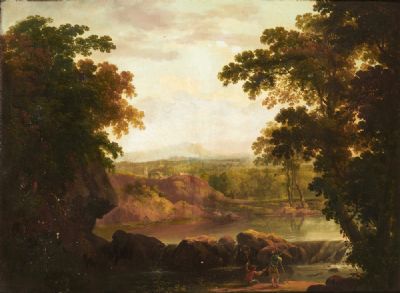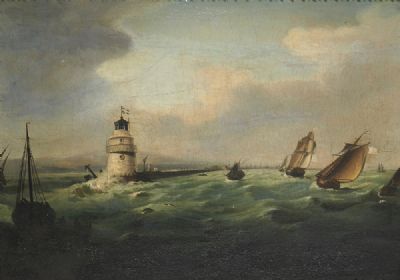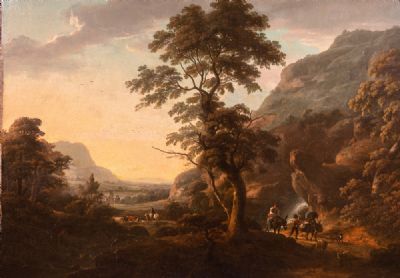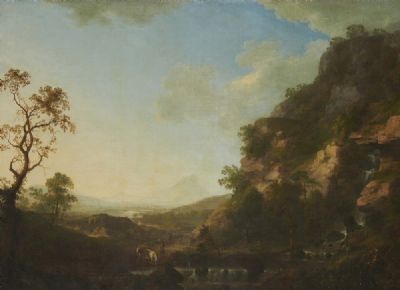Bidding on this item has ended.
James Arthur O'Connor
THE EAGLES NEST, KILLARNEY
Lot 54
Price Realised:
€40,000
Estimate:
€15,000 - €20,000
James Arthur O'Connor, 1792-1841
THE EAGLES NEST, KILLARNEY
oil on canvas, 28" x 36" (71 x 92cm), signed and dated 1831
Provenance: Possibly sold Christie's October 1854 (lot 61); Lord de Monstall; Hugh Maud, having been bought by his fa...
Read more
 Lot 54
James Arthur O'Connor
THE EAGLES NEST, KILLARNEY
Lot 54
James Arthur O'Connor
THE EAGLES NEST, KILLARNEY
 Lot 54
James Arthur O'Connor
THE EAGLES NEST, KILLARNEY
Lot 54
James Arthur O'Connor
THE EAGLES NEST, KILLARNEY
Estimate:
€15,000 - €20,000
James Arthur O'Connor, 1792-1841
THE EAGLES NEST, KILLARNEY
oil on canvas, 28" x 36" (71 x 92cm), signed and dated 1831
Provenance: Possibly sold Christie's October 1854 (lot 61); Lord de Monstall; Hugh Maud, having been bought by his father from a Dublin dealer who had acquired it at the Charleville Sale; Adam's, Dublin 3 Dec. 1974 (lot 328); Godolphin Gallery, Dublin.
Exhibited: Paintings from Irish Collections, Dublin, 1957 (No. 168); Irish Houses and Landscapes, Belfast and Dublin, 1963 (No. 33); James Arthur O'Connor, The National Gallery, Dublin, Ulster Museum, Belfast, Crawford Art Gallery, Cork, Nov-1985-April 1986 (No. 72) (bears label verso).; Colonel M.H. Grant, The Old English Landscape Painters (London, 1957-61) Vol. 8, p. 628, fig. 670
Literature: Anne Crookshank and Desmond FitzGerald, Knight of Glin, The Painters of Ireland (London, 1978) p. 212; John Hutchinson, James Arthur O'Connor, Exhibition Catalogue, The National Gallery of Ireland, Ulster Museum, Crawford Art Gallery (Dublin, 1985) pp. 151 and 168; Brendan Rooney, 'Seitenblick: German Influence on Nineteenth-Century Irish Painting', in Bernhard Maaz, A German Dream, Masterpieces of Romanticism, from the Nationalgalerie Berlin, Exhibition Catalogue, National Gallery of Ireland (Dublin 2004) 33
One of the masterpieces of Irish landscape art - and one of James Arthur O'Connor's 'greatest paintings - The Eagle's Nest, Killarney has long been critically acclaimed. Colonel Grant in The Old English [sic] Landscape Painters (1957) writes of the 'excellence which constitutes the superiority of this painting…That superiority is entirely in the handling which is that of a master inspired by a scene of singular savagery and beauty'. Arguing that the sky is worthy of John Constable, Grant carries on 'it is the true O'Connor, the manifestation of a genius'.
When the picture was exhibited at the landmark James Arthur O'Connor show at the National Gallery of Ireland in 1985, John Hutchinson wrote 'The Eagle's Nest, Killarney is certainly one of O'Connor's finest paintings, and…a powerful image of romantic solitude'. Suggesting that the single figure of a huntsman, or poacher, may be a self-portrait and hence make a powerful statement of the artist as an existentially isolated figure, insignificant compared to the brooding power of nature. Hutchinson continues
He stands on a cliff, contrasted with the dark ravine, and above him stormy clouds billow in a deep blue sky. The rocks in the foreground, defined by ochre impasto, extend across the painting, and rise again on the left, in the form of a boulder, which acts as a compositional balance to the hunter. Below the rock in the middle-distance, also highlighted with impasto, is a huge gnarled tree.
Dated to 1831, the genesis of the painting and other significant romantic works of the early 1830s, including A Thunderstorm (1832, National Gallery of Ireland), can be traced to a visit O'Connor made home to Ireland in late summer 1830. He wrote: 'I am about [to go] to the wild and beautiful scenery of my native country to refresh my memory, and get some studies to help me in future exertion of my profession - I know I will be benefited by a sight of the grand….scenery that I will meet with in Ireland and hope to show it on canvas'. Hutchinson suggests that he made studies at Killarney for the present work which marks a distinct shift in his art which 'became more overtly romantic and darker in tone'. In addition to his direct inspiration from Ireland's scenery, it is tempting to also suggest the influence of German Romantic paintings and in particular the work of his great contemporary Caspar David Friedrich (1774-1840).
Just six years after O'Connor painted, Samuel Lewis gave a vivid description of the scene he shows, which had earlier inspired William Ashford, O'Connor's putative master William Sadler and, most notably, Jonathan Fisher.
"The Eagles' Nest is a lofty rock of pyramidal form, rising abruptly from the river, which makes a sudden sweep round its base, and from which it has a very grand and picturesque appearance, though in a distant view it is lost in the superior height of the adjacent mountains; the base is covered with wood, and the face of the rock to its summit is interspersed with shrubs; the nest of the eagle is distinguished by a black mark near the vortex, and that bird is frequently seen soaring at a considerable elevation above the river."
The change of style in about 1830 which was noted above, and which brought us the almost Gothic romance of The Eagle's Nest, did not last, at least consistently, and O'Connor continued to produce neatly painted, serene landscapes until the end of his career. His obituary in the Dublin Monthly Magazine summed up his character and art. 'O'Connor was a man of simple, quiet, unsophisticated feelings, alive to the simple charms of nature, and awake to her slightest impulses. He was impressed by her sublimity and grandeur and artificially cultivated scenery was not to his taste'. Certainly sublime grandeur is the quality that The Eagle's Nest most readily evokes. At his best, as so triumphantly demonstrated here, O'Connor is one of the most original of all Irish landscape painters. As one of his earliest biographers put it, 'he was a poet with the brush, and exquisitely reproduced the impressions inspired by the more romantic and solemn aspects of nature'.
William Laffan, 2022
THE EAGLES NEST, KILLARNEY
oil on canvas, 28" x 36" (71 x 92cm), signed and dated 1831
Provenance: Possibly sold Christie's October 1854 (lot 61); Lord de Monstall; Hugh Maud, having been bought by his father from a Dublin dealer who had acquired it at the Charleville Sale; Adam's, Dublin 3 Dec. 1974 (lot 328); Godolphin Gallery, Dublin.
Exhibited: Paintings from Irish Collections, Dublin, 1957 (No. 168); Irish Houses and Landscapes, Belfast and Dublin, 1963 (No. 33); James Arthur O'Connor, The National Gallery, Dublin, Ulster Museum, Belfast, Crawford Art Gallery, Cork, Nov-1985-April 1986 (No. 72) (bears label verso).; Colonel M.H. Grant, The Old English Landscape Painters (London, 1957-61) Vol. 8, p. 628, fig. 670
Literature: Anne Crookshank and Desmond FitzGerald, Knight of Glin, The Painters of Ireland (London, 1978) p. 212; John Hutchinson, James Arthur O'Connor, Exhibition Catalogue, The National Gallery of Ireland, Ulster Museum, Crawford Art Gallery (Dublin, 1985) pp. 151 and 168; Brendan Rooney, 'Seitenblick: German Influence on Nineteenth-Century Irish Painting', in Bernhard Maaz, A German Dream, Masterpieces of Romanticism, from the Nationalgalerie Berlin, Exhibition Catalogue, National Gallery of Ireland (Dublin 2004) 33
One of the masterpieces of Irish landscape art - and one of James Arthur O'Connor's 'greatest paintings - The Eagle's Nest, Killarney has long been critically acclaimed. Colonel Grant in The Old English [sic] Landscape Painters (1957) writes of the 'excellence which constitutes the superiority of this painting…That superiority is entirely in the handling which is that of a master inspired by a scene of singular savagery and beauty'. Arguing that the sky is worthy of John Constable, Grant carries on 'it is the true O'Connor, the manifestation of a genius'.
When the picture was exhibited at the landmark James Arthur O'Connor show at the National Gallery of Ireland in 1985, John Hutchinson wrote 'The Eagle's Nest, Killarney is certainly one of O'Connor's finest paintings, and…a powerful image of romantic solitude'. Suggesting that the single figure of a huntsman, or poacher, may be a self-portrait and hence make a powerful statement of the artist as an existentially isolated figure, insignificant compared to the brooding power of nature. Hutchinson continues
He stands on a cliff, contrasted with the dark ravine, and above him stormy clouds billow in a deep blue sky. The rocks in the foreground, defined by ochre impasto, extend across the painting, and rise again on the left, in the form of a boulder, which acts as a compositional balance to the hunter. Below the rock in the middle-distance, also highlighted with impasto, is a huge gnarled tree.
Dated to 1831, the genesis of the painting and other significant romantic works of the early 1830s, including A Thunderstorm (1832, National Gallery of Ireland), can be traced to a visit O'Connor made home to Ireland in late summer 1830. He wrote: 'I am about [to go] to the wild and beautiful scenery of my native country to refresh my memory, and get some studies to help me in future exertion of my profession - I know I will be benefited by a sight of the grand….scenery that I will meet with in Ireland and hope to show it on canvas'. Hutchinson suggests that he made studies at Killarney for the present work which marks a distinct shift in his art which 'became more overtly romantic and darker in tone'. In addition to his direct inspiration from Ireland's scenery, it is tempting to also suggest the influence of German Romantic paintings and in particular the work of his great contemporary Caspar David Friedrich (1774-1840).
Just six years after O'Connor painted, Samuel Lewis gave a vivid description of the scene he shows, which had earlier inspired William Ashford, O'Connor's putative master William Sadler and, most notably, Jonathan Fisher.
"The Eagles' Nest is a lofty rock of pyramidal form, rising abruptly from the river, which makes a sudden sweep round its base, and from which it has a very grand and picturesque appearance, though in a distant view it is lost in the superior height of the adjacent mountains; the base is covered with wood, and the face of the rock to its summit is interspersed with shrubs; the nest of the eagle is distinguished by a black mark near the vortex, and that bird is frequently seen soaring at a considerable elevation above the river."
The change of style in about 1830 which was noted above, and which brought us the almost Gothic romance of The Eagle's Nest, did not last, at least consistently, and O'Connor continued to produce neatly painted, serene landscapes until the end of his career. His obituary in the Dublin Monthly Magazine summed up his character and art. 'O'Connor was a man of simple, quiet, unsophisticated feelings, alive to the simple charms of nature, and awake to her slightest impulses. He was impressed by her sublimity and grandeur and artificially cultivated scenery was not to his taste'. Certainly sublime grandeur is the quality that The Eagle's Nest most readily evokes. At his best, as so triumphantly demonstrated here, O'Connor is one of the most original of all Irish landscape painters. As one of his earliest biographers put it, 'he was a poet with the brush, and exquisitely reproduced the impressions inspired by the more romantic and solemn aspects of nature'.
William Laffan, 2022
- Enquire
- View all lots by this artist
- How bidding works
Please note: You will require a deVeres account in order to bid. Please register via the website. Each lot will close numerically. If there is late bidding the time may be extended which could delay subsequent lots. The lots will start to close from 2.00pm on auction day, closing at 45 second intervals.
PLEASE BID EARLY TO AVOID DISAPPOINTMENT.
In order to allow rival bidders the opportunity to respond to a late bid the following extensions will apply:
IF A BID IS RECEIVED WITHIN THE FINAL 45 SECONDS OF THE COUNTDOWN THE CLOCK WILL RESET TO 60 SECONDS.
At any point you can leave a maximum bid, representing the highest price you are prepared to pay for a particular lot. Bidding only advances when there is competition from a rival bidder. In that case the system bids on your behalf, only up to the maximum if required. All bids are relayed to you be email, along with notification if you have been outbid.
All maximum bids are confidential and not disclosed. The system will endeavor to purchase the lot for you for the least price. Bids are subject to buyer’s premium of 25% (incl vat), with no additional charges.
In the event of a tied bid, the preference will be given to the bid submitted first. The second bidder will receive immediate notification of being outbid.
PLEASE BID EARLY TO AVOID DISAPPOINTMENT.
In order to allow rival bidders the opportunity to respond to a late bid the following extensions will apply:
IF A BID IS RECEIVED WITHIN THE FINAL 45 SECONDS OF THE COUNTDOWN THE CLOCK WILL RESET TO 60 SECONDS.
At any point you can leave a maximum bid, representing the highest price you are prepared to pay for a particular lot. Bidding only advances when there is competition from a rival bidder. In that case the system bids on your behalf, only up to the maximum if required. All bids are relayed to you be email, along with notification if you have been outbid.
All maximum bids are confidential and not disclosed. The system will endeavor to purchase the lot for you for the least price. Bids are subject to buyer’s premium of 25% (incl vat), with no additional charges.
In the event of a tied bid, the preference will be given to the bid submitted first. The second bidder will receive immediate notification of being outbid.
Sign-up to our auction alert
Signup for personalised Irish art recommendations, invitations to viewings and auctions, articles and more.

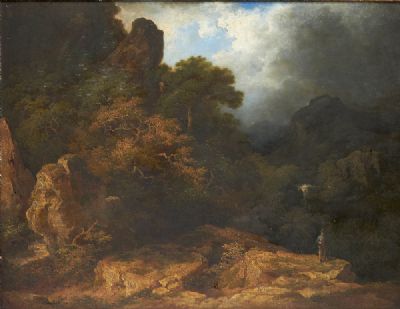
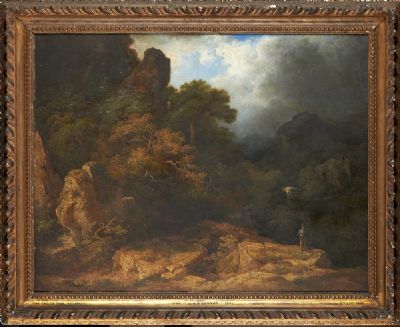
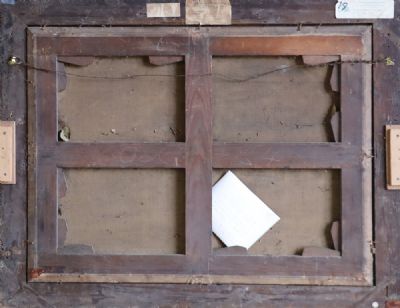
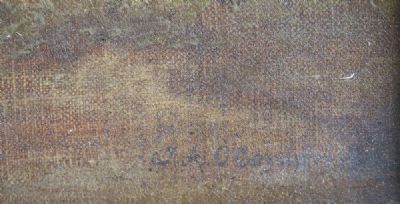
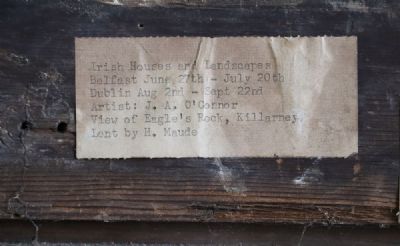
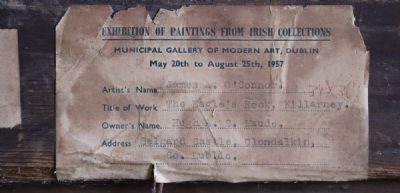
 View More Videos
View More Videos DVTV Click Here To View Video
DVTV Click Here To View Video